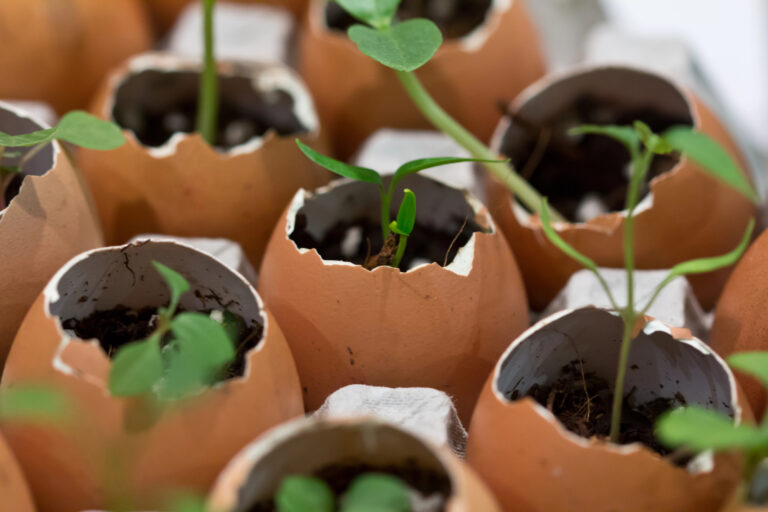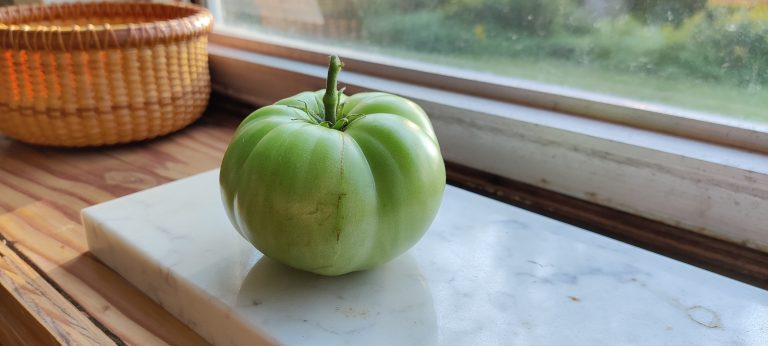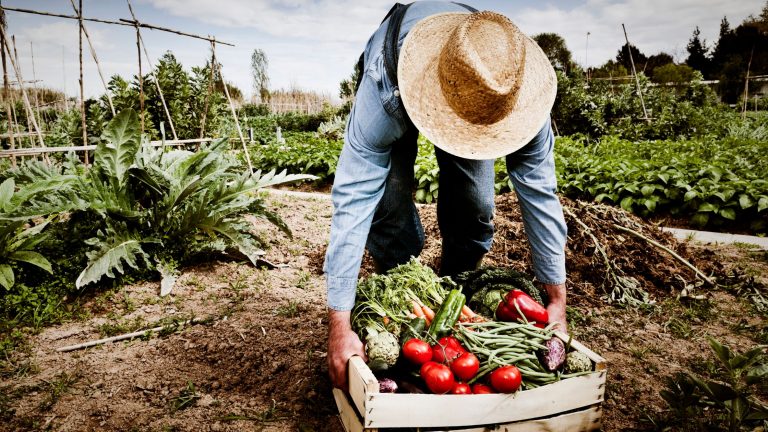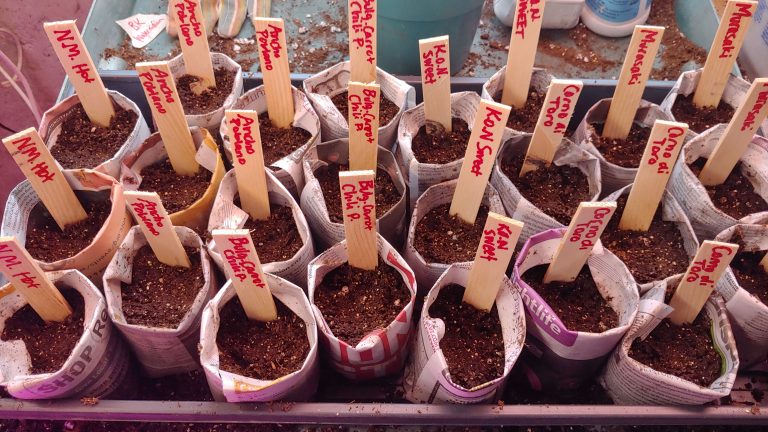This post may contain affiliate links.
Growing and storing onions is a great way to save money on groceries and supply more of your own food. Onions are used in so many dishes, it makes complete sense to grow as many of them as possible while your garden is in season. We’ve written about how to grow onions on the site in the past, and now we want to help you make the most of your onion harvest. In this blog post, we’ll walk you through the steps of how to harvest, cure, and store your onions so that they’ll last throughout the winter.
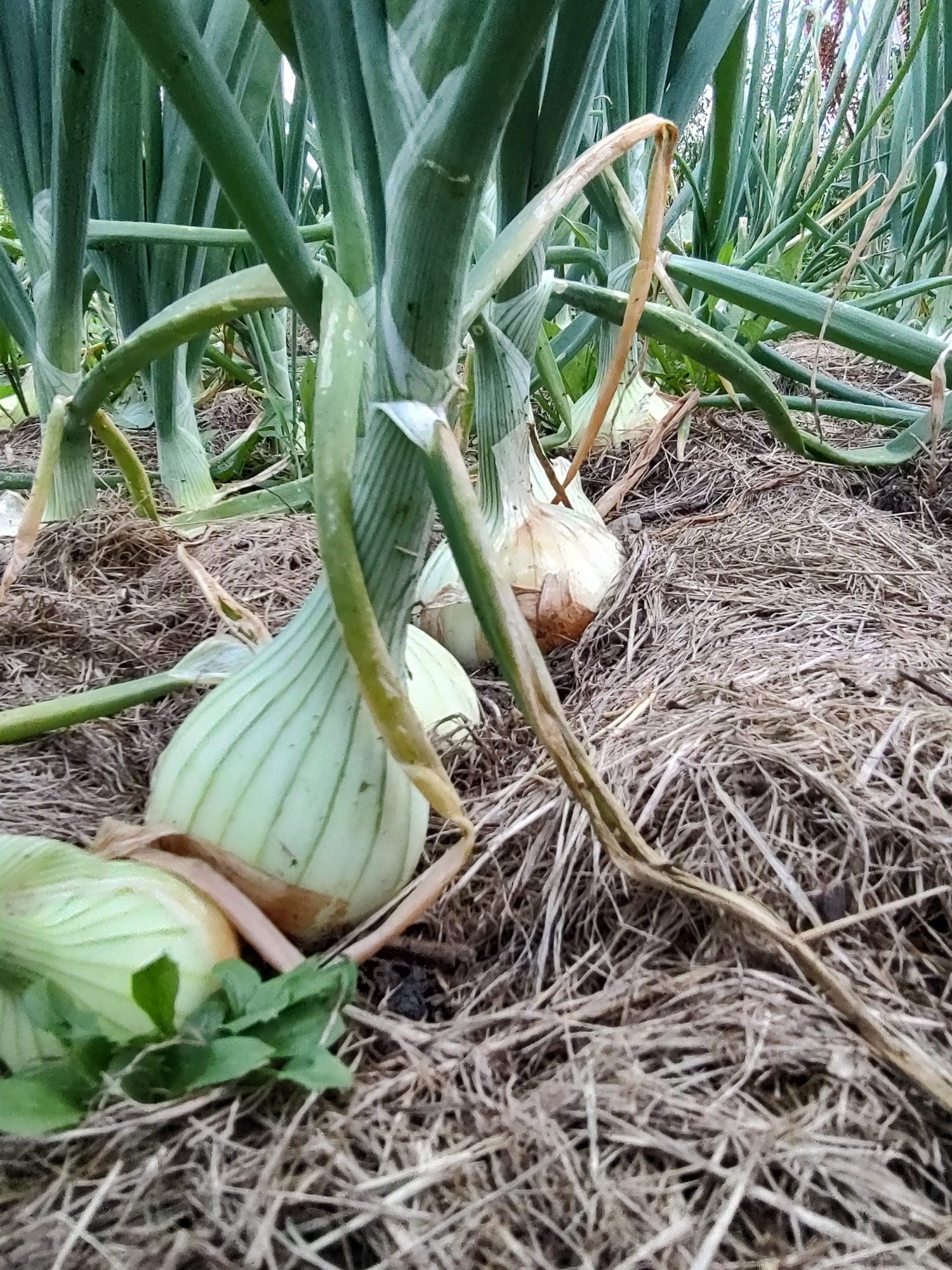
until their stems fall completely over.
Harvesting Onions
Onions are ready to harvest when the tops have fallen over and begun to turn brown. To harvest your onions, loosen the soil around them as needed and then lift them out of the ground, being careful not to damage the roots or skin. Once you’ve harvested your onions, allow them to dry by either leaving them in the sun for an hour or bringing them inside and laying them out with space to breath. Brush off any excess dirt and then get ready to cure them.
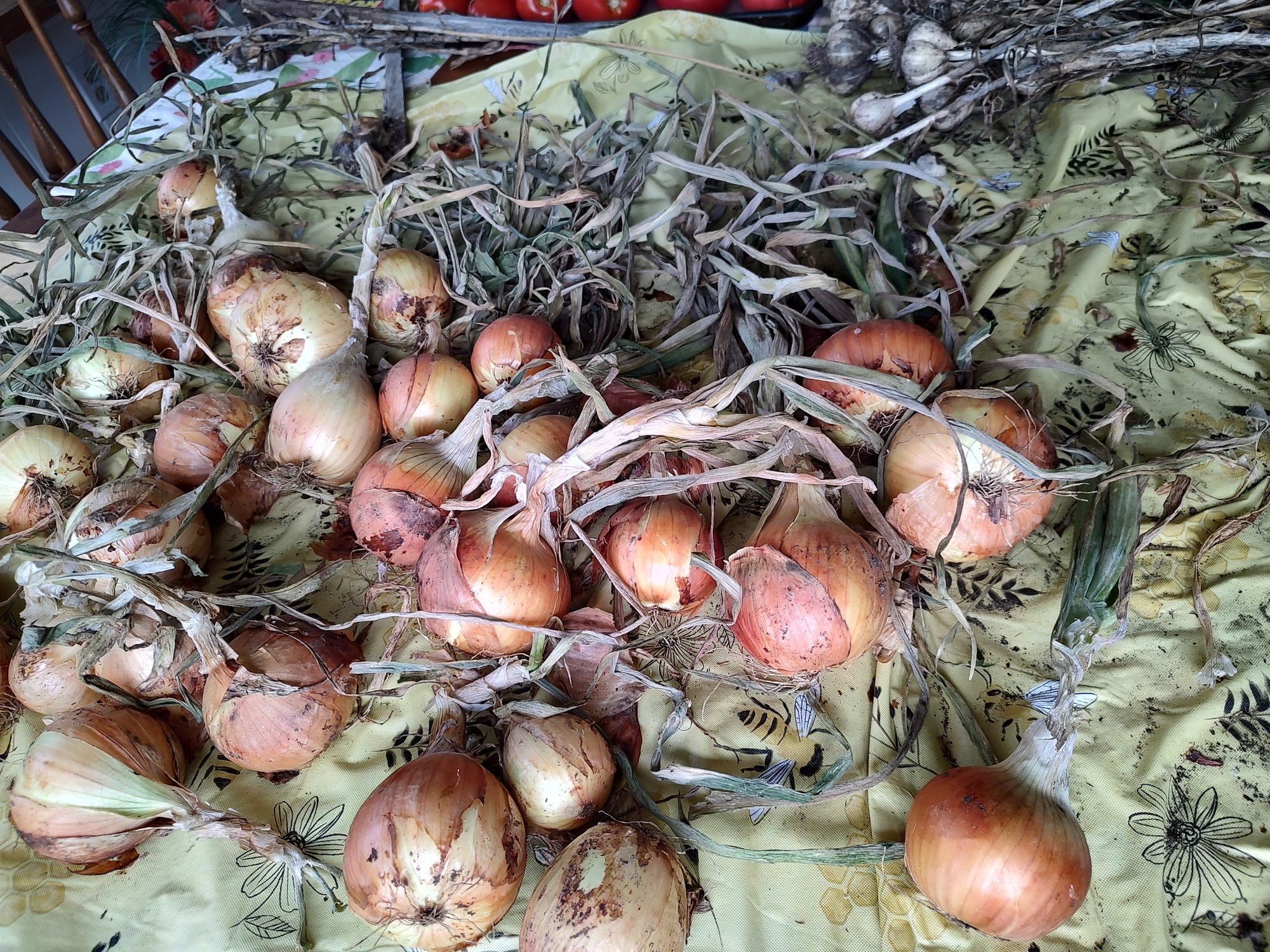
Curing Onions
The curing process allows onions to develop their full flavor and storage potential. To cure onions, simply leave them in a cool, dry place with good air circulation for 2-3 weeks. They can be laid out flat on a surface, or they can be hung upside down – a table with slats works great for this purpose! During this time, make sure to check on them occasionally and remove any that have started to rot so that they don’t spoil the others. You are looking for green part of the onion to turn completely brown and dry. This typically takes about 2-3 weeks.
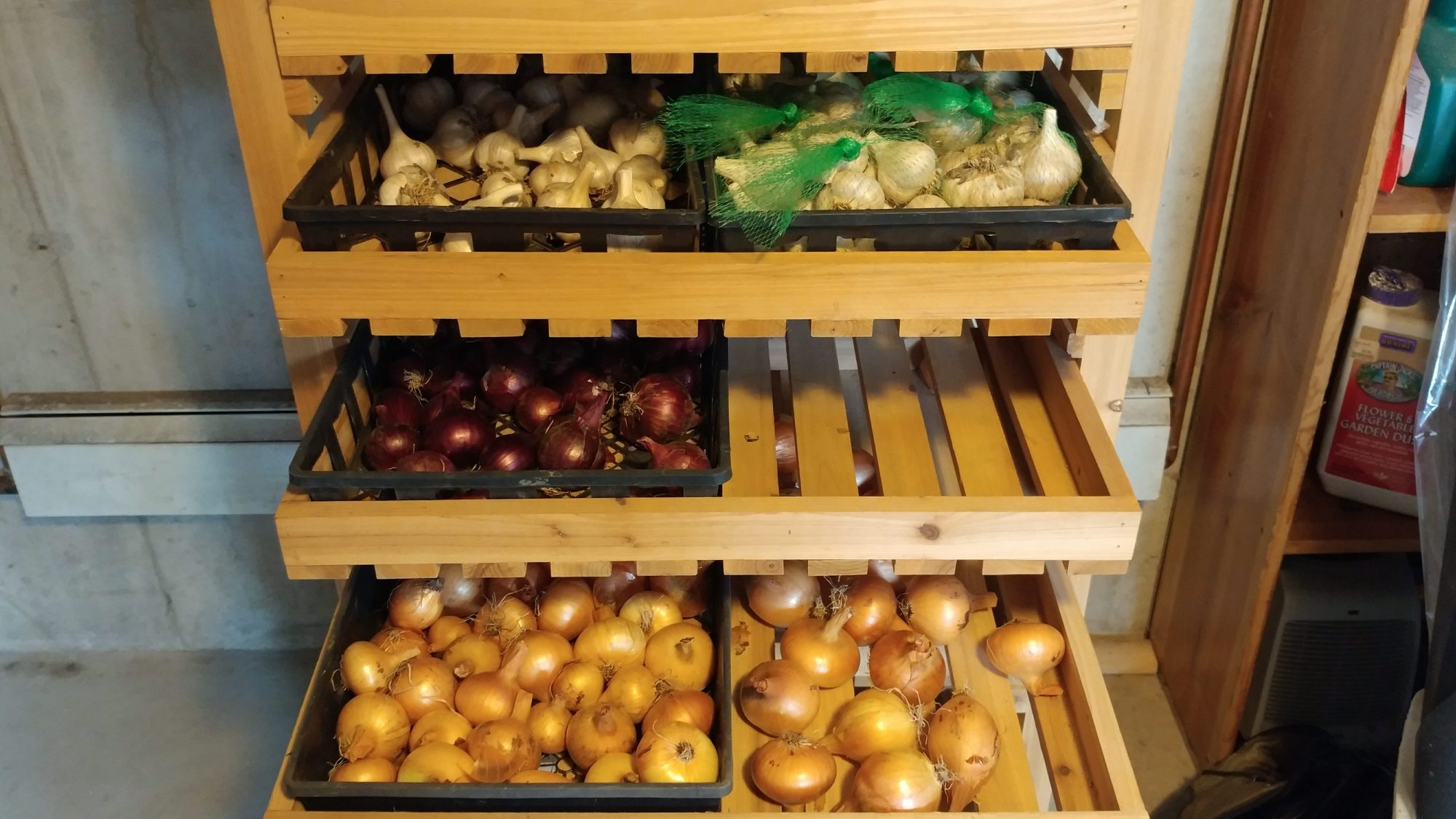
Storing Onions
Once your onions are fully cured, they can be stored in a cool, dark place for several months. One way to store onions is to braid their tops together and hang them up in a dark pantry or basement. Alternatively, you can also cut off the tops and store them in mesh bags or in baskets, or on a shelf with slats (such as in a harvest rack).
The ideal storage conditions for onions would be at about 32-45 degrees Fahrenheit with about 60-70% humidity. You can also keep onions in a root cellar if you have one, but make sure that your root cellar isn’t overly damp. Other options include a dry basement or garage.
Whatever storage method you choose, just make sure that there is good air circulation so that your onions don’t start to mold or rot. Also make sure that they are not getting direct sunlight; you can cover your shelf with burlap or air-permeable garden fabric to keep direct sunlight out. Check on your onions regularly and make sure to remove any that are starting to get soft – these onions can accelerate rotting of others nearby.
With these tips, you can enjoy fresh onions all winter long!
For more great resources on storing veggies, check out these articles!
- How to Harvest, Cure, & Store Garlic
- How to Store Carrots
- How to Cure & Store Potatoes
- How to Store Pumpkins
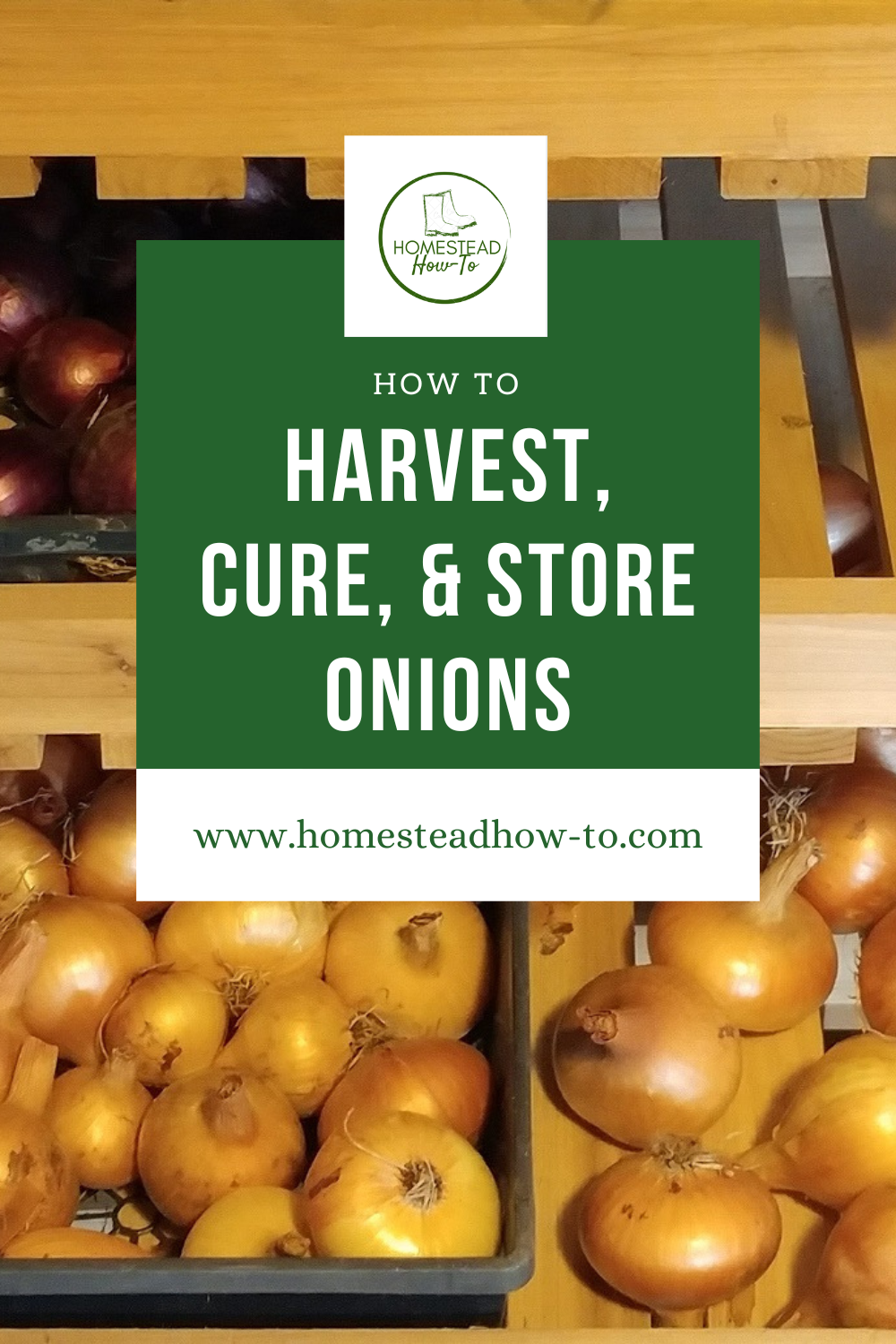
Carrie Williams Howe is an educational leader by day and an aspiring homesteader by night and weekend. She lives on a small homestead in Vermont with her husband, two children, and a rambunctious border collie. She blogs about her family's homestead life at The Happy Hive.

